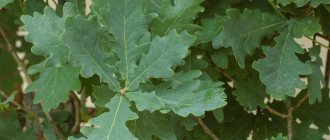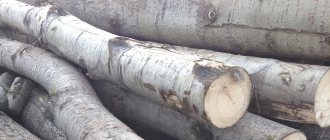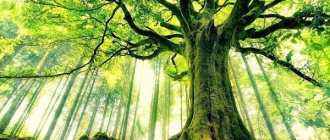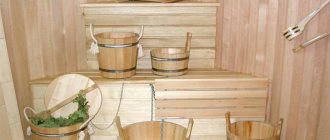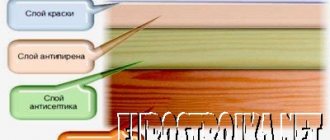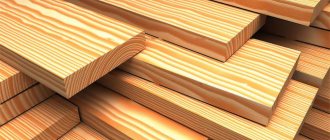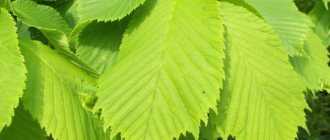This tree has become a real decoration of the parks. It has large patterned leaves that have five sharp points. It is beautiful at any time of the year, but is especially noticeable in autumn. Maple leaves come in a variety of colors, from traditional yellow to crimson. It is impossible to take your eyes off the tree, it becomes so elegant. It is from maple leaves that people most often collect beautiful autumn bouquets in the fall.
My message will tell you more about this plant.
Description
This tree grows up to 40 meters in height.
Maple has many advantages. He is not afraid of the cold. And this is very important for the tree. In our northern regions, this property helps it survive the severest frosts.
Maple is also drought resistant. Many trees dry out without water. This is both poplar and willow. And a maple can live a long time without water.
It also grows very quickly. In one year, its shoots grow by almost a meter. Maple grows very well next to oak and ash. We can say that they are friendly with each other.
Its wood is white with shades of red-brown or yellow.
In spring, trees are among the first to awaken. With melted snow, water rises from the ground to the branches. When you want to taste maple sweet sap, simply make a cut in the tree and use any container.
Variety of species
There are many varieties of this type of vegetation around the globe. The report about maple tells about the most popular species. Among them:
- White;
- Holly;
- Field;
- American;
- Black;
- Tatar.
The white variety has several names - false sycamore and sycamore . This slender tree-like plant grows up to 30 meters, its top is decorated with a lush crown in the shape of a tent. The leaf is dark green on one side and whitish on the other. Grows in the southern regions of Russia, Ukraine, and Europe.
Holly is the most popular species, widespread in the central zone of the Russian Federation.
The report on Norway maple provides a brief description of several of its varieties, which have different leaf colors.
For example, the Drummondi species has pink-colored young foliage that becomes creamy over time. Another unusual variety, Rod Royal, is covered with red leaves throughout the growing season.
Field varieties are classified as shrubby plants. It has small, inconspicuous inflorescences and a spherical crown. In the wild it grows on different soils and tolerates cold, short periods of drought and wind.
The American type grows in some areas of North America and is the symbol of one of the states. It produces a very sweet juice, from which the syrup of the same name is produced. It feels comfortable in cold climate zones, has a powerful trunk with dark bark and a lush spreading crown.
The black look is considered one of the most beautiful and unusual. It grows near bodies of water on the North American continent.
The leaves of this tree are dark burgundy in color, their shape can be five-fingered or three-fingered, and the sharp ends are always lowered.
Tatarian or black maple has the form of a large shrub up to 9 meters high. The ripening fruits are rich red in color and are clearly visible against the background of green finger-shaped leaves. The bark color is dark brown.
Often used as a decorative decoration in local areas.
Reproduction
Maple fruits resemble propellers, only small ones. They are called lionfish. During leaf fall, winged seeds hang on the tree for a very long time.
The wind scatters them around and falls to the ground. Some of them will sprout in the spring. And a new tree will grow, powerful and beautiful. This is how this plant reproduces.
How do plants differ from each other: trees, shrubs and herbs?
The first thing that comes to mind is size, or more precisely, height. The trees are tallest, bushes are behind them, and grass is below them. This usually happens, but not always. In nature, there are low-growing trees, and grass sometimes grows taller than bushes. So the main difference is in the structure. In particular, the presence of a barrel.
The tree has a thick, hard trunk, the only one for the plant. It branches at the top. Damage to the trunk leads to the death of the entire tree.
Shrubs do not have one main trunk (or they have one, but it is very small and close to the soil) - they have numerous stems - branches: woody, thick, but not too strong; Moreover, they can die off and be replaced by young shoots - that is, the death of one or several branches will not lead to the death of the entire plant.
Herbs do not have a trunk at all; the entire plant is a thin soft stem that has no branches.
There are some differences in the life cycle: grasses can be annual, biennial, or perennial; shrubs are usually perennial, and trees are always perennials.
Where does it grow
Maple grows throughout the Northern Hemisphere of the Earth. About 20 plant species are known in Russia, the most common of which are:
- Norway maple;
- Tatar;
- field;
- white.
Japanese maple is listed in the Red Book of Russia.
In the Southern Hemisphere of the Earth, only one species grows - laurel.
Wood
Durable and beautiful maple wood is a valuable species. It has long been used to make high-quality furniture, musical instruments and various crafts.
- In the old days, spears and handles of bladed weapons were made from it.
- Sycamore (white maple) served as material for gusli: the expression “yarovchaty gusli” means made from sycamore.
- The frame of Stainway grand pianos is made from sugar maple wood.
- In 2012, the St. Petersburg Philharmonic wanted to purchase a bassoon made from “mountain wavy maple,” cut down “at an altitude of 800 m and aged for at least 20 years.”
- In 2005, coins made from maple were introduced into circulation in the Congo.
Maple sap
A person gets delicious syrup from maple. And when it is condensed using a certain technology to the consistency of butter, the resulting sweetness is tasty and healthy.
But man is not alone in his desire to eat. This juice has long been appreciated by birds and animals. The woodpecker, in order to get to the sweet, makes a hole in the bark with its beak, and the squirrel simply bites through it. This does not harm the tree at all. These wounds are small and heal quickly.
Using maple
- Maple has not found its own use in official medicine, but folk healers use different parts of the plant to prepare medicinal compositions. Buds, leaves, bark, flowers and maple sap are used as medicinal raw materials.
- This tree has medicinal properties due to the content of tannins, alkaloids, sugars, carbohydrates, vitamins and flavonoids. Medicines made from maple have diuretic and choleretic effects.
- Infusions and decoctions of maple leaves and bark are used to fight various infections, boost immunity and improve the condition of hair and skin.
- Maple is also famous as a wonderful honey plant. Its honey production is quite high and amounts to 150-200 kg per 1 hectare of planting.
- Maple wood is also used in the furniture industry. It is used to create parquet, skis, musical instruments, cladding panels and chess pieces. Its use has become popular since ancient times.
- Maple is specially grown for its wood because it is highly processed. This is the most suitable material for creating railings and stairs.
Symbol of Canada
The maple leaf is featured on the national flag of Canada. But he did not appear there right away. There is a legend about this. In 1860, the Canadian city of Toronto was going to host the Prince of Wales. Residents of the city with national symbols in their hands were preparing to welcome the guest. The English emigrants held roses in their hands. The Scots prepared thistle branches. The symbol of Canada at that time was the beaver. People couldn't carry these animals in their hands. Then the Canadians were asked to bring maple leaves to this meeting. The leaf then adorned the country's flag and became a symbol of a united nation.
If this message was useful to you, I would be glad to see you in the VKontakte group. Also, thank you if you click on one of the “like” buttons:
Leaves and bark
The Latin name of maple - Acer (sharp) - aptly describes its characteristic feature: the leaf in most species has sharp edges, palm-shaped with outstretched fingers.
The leaves are divided into three, five and even nine lobes with pointed or rounded tips and have a wide variety of colors. There are varieties with variegated foliage and changing its color several times during the season (for example, red maple “Armstrong”).
With the end of leaf fall, the color and texture of the bark comes to the fore. Thus, in reddish-veined and hairy maples, it resembles snake skin: white stripes on a green background. In the gray maple, the top layer of velvety brown-brown bark curls into curls before winter, coloring your hands at the slightest touch.
Popular reports
Explosions are one of the most common causes of emergencies. They are rarely without environmental, social and economic consequences.
Indoor plants play an important role in home decoration. Unlike porcelain figurines, they benefit people's health. Flowers and other green plants purify the air and kill germs.
Feldspar is one of the most common minerals of the silicate class, which plays an important role in the formation of hard rocks of various shapes and compositions. This mineral can rightfully be called the lord of the dungeon,
- Find out
- Plants
- Trees
- Herbs
- Determinant
- Grow
- Mushrooms
- Edible
- Poisonous
- Determinant
- Prepare
- Animals
- Animals
- Birds
- Forest trifle
- Footprints
- Determinant
- Traditions
- Holidays
- Beliefs
- Creatures
- Create
- Upload a photo
- Write a Story
- Tell us about the place
- Get inspired
- Atmosphere Atmospheric photo collections
- Seasons
- People
- Animals
- Vegetable world
- Geography
- Mood
- Architecture
- Travel
- Protect
- Poetry
- Seasons
- Mood
- Weather
- Plants
- Animals
- Subjects
- Stories
- Write a Story
- Keep a diary, put stories into Books, link them to Places, Regions, plants, animals, let thousands of people see them!
The forest is waiting for your stories!
- Regions regional project pages
- River areas, natural parks, etc. As a rule, Places are included in Territories
- Places, natural monuments, attractions and other objects on the map
LINDEN
I grew up, sticky, thin and flexible -
Don't break me!
Honey color
I will bloom in the summer -
Protect me.
At noon below me
Hide from the heat -
Grow me up.
I will cover you from the rain with leaves -
Water me.
Together, my dear friend,
Let's gain strength -
You love me.
And you'll wait until the deadline
You will go out into the wide world -
Don't forget me! Linden is a slender tree with a dense crown. On a hot summer day it is always cool in its shade, so linden was planted in the parks of ancient noble estates.
Unlike many trees, linden blooms quite late - in late June - early July. Its flowers are yellowish-white, collected in small clusters. They look unattractive, but they produce a large amount of nectar. Linden is the best honey plant. Bees fly around it all day long, collecting sweet nectar.
A linden flower produces 2-3 milligrams of nectar per day. Linden honey contains many useful substances. Linden flowers also have healing properties. Linden tea is drunk for colds.
In winter, linden attracts jays, woodpeckers, and squirrels—the linden fruits remain overwintered on the tree. So the forest inhabitants rush to feast on them.
Linden is a good neighbor for other trees. There are never any old fallen leaves under the linden tree; they quickly rot and return nutrients to the soil, including the calcium needed by plants.
Linden wood is plain, white, without shades, and soft. Since ancient times, it has been used to cut window frames, make carved kitchen utensils, toys, and musical instruments.
The bark of young linden trees used to be stripped of bast, from which bast shoes were woven. RIDDLE
Takes from my flower
The bee has the most delicious honey.
The thin skin is removed.
(Linden)
PROVERBS AND SAYINGS
The pine tree feeds, the linden tree clothes.
What does Klen look like?
In our country, the most widespread is the Norway Maple.
The height can reach 30 meters. On average, this representative of the Maple family can live up to 200 years, while his brother Canadian Maple is a real long-liver and lives until the 4th - 5th centuries.
The bark of a ripe Maple has a gray tint. The diameter of the tree reaches one and a half meters.
Maple leaves cannot be confused with anything. Large and sinewy, they have five lobes with pointed lobes.
In autumn, the leaves become filled with amber fire until they fall off. After leaf fall, dragonfly-like seeds fall to give life to new shoots.
Maple wood has a white color with a slightly golden tint. It paints well, so it is valued in carpentry workshops.
BIRCH
In a white sundress
with handkerchiefs in pockets,
With beautiful clasps, With green earrings.
(A. Prokofiev) It is the birch tree that is considered the symbol of our country. Since ancient times, songs and poems have been written about this tree: There was a birch tree in the field, There was a curly birch tree in the field. A white birch tree under my window
She covered herself with snow, like silver,
On fluffy branches with a snow border
The tassels bloomed with white fringe.
(S. Yesenin)
Birch is unpretentious and grows on dry sands and marshy soils. It can be found in the forest, in the field, and in parks.
In early spring, when the buds swell on the trees, flowers appear on the birch - inconspicuous earrings. In summer they noticeably increase in size and turn brown. Each ripe earring contains several hundred small seeds. And on a whole adult tree, in fruitful years, up to several million of them can ripen.
The white bark of birch - birch bark - reflects the sun's rays and protects the tree from overheating.
Since ancient times, birch bark has been used to make household products. Raw materials were harvested in the spring. At this time, the birch bark sheds, that is, it freely separates from the wood. The raw materials were dried in the shade and smoothed under a press. Tueskas, mugs, bread bins, boxes and other household items were made from birch bark. Bast shoes, baskets, trunks were woven from the inner part of the birch bark - bast.
When people did not yet know how to make paper, they wrote on birch bark. Birch bark letters, which are 700-800 years old, have survived to this day.
Birch is still beneficial today. Furniture is made from its wood. Birch buds have healing properties and are used to prepare medicines.
MYSTERY
Sticky buds
green leaves,
With white bark
Stands above the mountain.
(Birch)
Application of Maple
Maple syrup is a delicacy that has made Canada famous, but not everyone knows that in Russia there are maple farms where trees are grown to extract sap. One of these farms is located near St. Petersburg.
Since Maple is a valuable honey plant, apiaries located near such farms produce excellent honey.
Maple is the strongest wood, therefore it is used by craftsmen for small wood carvings. Guaranteeing a small number of chips, Maple allows you to create unique detailed patterns and engravings.
Due to its acoustic properties, white Maple is used in the manufacture of parts for guitars and bowed instruments. Maple is famous for adding brightness to sound.
Due to its hardness and wear resistance, Maple parquet is an indispensable attribute in dance classes.
Masters of the art of applying marquetry patterns to furniture value Maple veneer for its unique patterns, which are obtained by cutting the veneer from the root part.
ASPEN
AspenPainted
Autumn.
I like Aspen very much.
She shines with gold,
There's only one pity -
Flies around. (V. Lunin) Even in calm weather in the aspen forest of leaves, as if they were constantly whispering about something. If a breeze blows, the aspen leaves begin to sway and rustle.
You've probably heard the expression: “trembles like a leaf.” This is what they say about a person who is cowardly or overcome by fear. This expression did not arise by chance. For a long time, people have noticed that at the slightest breath of wind, aspen leaves begin to rustle - “tremble.” Why is this happening? Aspen leaves are round in shape and sit on a long petiole.
When air moves, they begin to sway, hit each other and make noise. It is interesting that the leaves of young shoots are completely different from the leaves of an adult tree. They are larger, softer, slightly pubescent, with a pointed tip. The petioles of young leaves are short and round in cross-section, and they cannot “tremble”.
Aspen blooms in early spring. The leaves have not yet bloomed, and the aspen is covered with long, shaggy catkins. In autumn, aspen leaves are among the first to acquire elegant colors in different shades: from soft yellow to bright crimson.
Aspen fruits ripen in autumn. Its seeds are light and small. Thanks to their fluffy crest, they fly over long distances. Young aspen trees are characterized by rapid growth. Young trees (up to 30 years old) grow 1.5-2 meters annually. The life expectancy of aspen is 60-80 years.
Since ancient times, aspen wood has been used as a finishing material in the construction of wooden churches. A ploughshare was cut from it - a patterned shingle that covered the domes. Properly dried wood is second only to oak and pine in strength, so it is suitable for making boats and skis.
MYSTERY
What kind of tree stands?
There is no wind, but the leaf is shaking?
(Aspen)
FOLK SIGNS
• Aspen in catkins - harvest for oats.
• Just as the aspen trembles, so the cattle in the field are well fed.
We suggest you familiarize yourself with Preparation of marinade for hot smoked lard
• In autumn, one berry is a bitter rowan, one tree is a bitter aspen.
Interesting Facts
Maple grows very quickly and can grow as much as two meters in a year.
In the old days, the most important part of the spinning wheel was made, if possible, from Maple. Thanks to its strength and uniform structure, Maple made it possible to produce a comb with thin and long teeth. These ridges have been preserved in museums and some huts to this day.
The material for the Trojan Horse from Greek mythology was Maple.
One of the oldest Maples in the countries of the former USSR is located in Kyiv in the botanical garden. Its age is 150 years.
In Japan and China, the maple leaf symbolizes love.
In the tropics there are evergreen maples that never turn yellow.
In the 19th century in Russia there was a tradition of threading a child between the branches of a maple tree. Maple was considered to have magical powers, and part of these powers was transferred to the child, after which an amazing and long life awaited him.
About plants of Russia for children. Maple
More than 20 species of maple grow in Russia: in its European part and in the Far East.
Norway maple leaves are large, rounded-angular in shape, with large sharp protrusions along the edge. Botanists call such leaves palmate-lobed. Tree up to 30 m tall, up to 1 m in diameter, with a lush crown. The trunk is covered with gray bark with small cracks. Young shoots have reddish bark. The fruits ripen in September.
In autumn, no tree seems as beautiful and elegant as maple. Gradual cooling, especially in dry weather, colors its leaves in various warm colors - yellow, orange, red, purple. This means that the protective coloring substances of the wood - pigments - come into effect one by one. They help the maple to better adapt to changing weather conditions.
You will not see damage caused by caterpillars and beetles on maple leaves - insects do not touch its foliage.
Maple blooms in spring. Its flowers bloom at a time when the tree has not yet put on leaves; small leaves have just appeared. A blooming maple is noticeable from afar: many greenish-yellow inflorescences can be seen in the crown of the tree on bare branches. All flowers contain nectar and are readily pollinated by bees. Maple is one of the best honey plants.
The maple fruit consists of two winged fruitlets, sticking out in different directions and grown to each other. These fruits are called lionfish. Lionfish, falling even from a small height, rotate very quickly. It turns out to be a propeller that carries the fruit with a tailwind over long distances.
Maple grows well in the shade and in poor soils. Its seeds have excellent germination. That is why we so often see friendly shoots of young maples under the canopy of other trees.
Maple tree sap is sweet. Even our usual maple - Norway maple - contains up to 5% sugar. And in Canadian - 4 times more. That's why it's called sugar.
Maple is a very common tree in Russia and Europe. It is often planted in park areas, where it gets along well with oak trees. Landscape designers love maple for its fast growth and frost resistance. This makes it possible to grow these trees even in northern latitudes, where they take root well. A distinctive feature of maple is the diversity of its species and the beauty of its leaves. They delight with their patterns and colors. Autumn maple leaves are especially solemnly beautiful. Descriptions of such bouquets can often be found in literary works. Not only writers, but also schoolchildren are interested in this tree. In 6th grade biology, close attention was paid to the description of a maple leaf. Children study its structure in a special section of the textbook. In this article we will provide a description and photo of maple leaves, and also talk a little about the species diversity of this beautiful tree.
